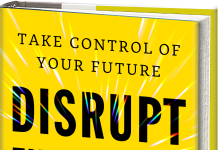By Bryan Mattimore
In the last 25 years, I have facilitated more than a thousand ideation sessions. The techniques I use in any one session vary widely depending on the creative task. The design of a strategic visioning session, for example, will be very different from that for a new product ideation session, and a creative cost-cutting session design is not even remotely similar to a positioning ideation session. You might be surprised to learn, then, that I believe that 80 to 90 percent of the time, there is a single best technique to use to begin an ideation session, regardless of the creative task or desired outcome. This technique is similar to and has many of the pluses of Osborne’s brainstorming technique, but it also has some critically important differences and advantages. The technique is called brainwalking and I invented it, out of necessity, when doing work on a large chewing gum project several years ago.
Brainwalking has a close cousin, brainwriting, which helped lead me to the creation of brainwalking, a kind of written idea exercise that is simple to learn and facilitate. Brainwriting begins with presenting the creative challenge and giving a piece of paper to each participant in the session. Each person writes down an idea for meeting the challenge on a blank sheet of paper and passes his or her paper to the next person, who then builds on that idea or uses it as a stimulus to trigger a new idea. Papers usually are passed for four to five rounds. So if there are 12 participants in a session and five rounds of passes, you end up with 60 ideas. After the final round, each sheet is returned to its original owner, who then circles one or two favorite ideas to discuss and build on with the group as a whole. That’s it. Don’t let the simplicity of the technique fool you. It’s a profound and powerful technique with important psychological and group dynamic ramifications. Most obvious, the group using this technique generates a great number of ideas very quickly. Contrast brainwriting with a typical brainstorming session, in which one person throws out an idea, another builds on it, and yet another person builds on that build. One person talks and everyone else listens. It’s not particularly efficient or effective way to get a lot of ideas out quickly.
Brainwriting also allows people to share from the start any ideas they may have thought of before coming into the session. It’s important to get those ideas out early because someone may well have a great idea, and you don’t want to either overlook the idea or not have the opportunity for the group to develop the idea further. Sharing these ideas is also important because you want everyone open to the process of creating new ideas with the others in the room. If they’re preoccupied with one of their own ideas and waiting for “the perfect time” to present it, they’re not fully engaged in the process of creating new ideas.
Brainwriting also gets around what I call the introvert/extrovert problem in brainstorming. How many times have you been in a meeting where you wish the extrovert loudmouth who is saying inane things would shut up so the brilliant introvert in the corner who hasn’t said anything yet would get a chance to speak? In brainwriting, everyone gets equal time to “speak” in a nonthreatening way: with their pen. It’s a pure and fairly concise form of creative democracy.
From the standpoint of group dynamics, brainwriting is also modeling the behavior that is so critical to the success in the rest of the ideation: idea building and piggybacking. Each time the paper moves to the next person, people build on other participants’ ideas and in this way fulfill the true intent of the meeting: generating better ideas through mutually stimulated creativity. Otherwise everyone simply could e-mail their idea, and no one would have to bother to get together as a group. Clearly brainwriting is a powerful way to start an ideation session.
Brainwalking is even better.
Brainwalking evolved out of ideation sessions I did for Trident and Dentyne gums, both owned at the time by Warner-Lambert. The assignment in the first ideation session was to generate innovative positioning and marketing ideas for Trident. I used the brainwriting technique to start the meeting, and it worked well, even better than I had expected.
A week later, I was slated to facilitate the second ideation session, this time for Dentyne. My problem was that several of the people who were attending the Dentyne session also had been in the Trident session, and I didn’t want to start the session with the same exercise. I had to change the act so session participants would continue to feel excited about and engaged in the process because we were doing something new. After much creative struggling, I had an idea that now seems both simple and obvious: Move the people instead of the papers.
I began the Dentyne ideation session by taping large sheets of flip chart papers on the walls around the room, which I called “ideation stations.” I gave everyone a marker; then each person went to an idea station and wrote an idea at the top of the paper. Next, I had them rotate to their neighbor’s paper and add an idea, just as they might in brainwriting. After five rotations, I had them return to their original sheet and circle one or two of their favorite ideas.
It’s pretty straightforward and didn’t seem much different from brainwriting. But somewhat to my surprise, I found that brainwalking had several important and powerful advantages over brainwriting.
For one, the sheer act of getting people up and moving increased the energy in the room significantly. Some people did think better on their feet. (Hemingway certainly thought he did. He used to write standing up, with his typewriter on top of his bureau.) In any case, it’s an energizing and fun way to start the day.
Also, the ideas in brainwalking, unlike those in brainwriting, are public, and public is a benefit in an ideation session. It’s reinforcing for the participants to see dozens of ideas on the walls after only a few minutes of work. I’ll never forget what one client said to me, only half-joking, shortly after a brainwalk: “Hey, it’s Miller time! Look at all the ideas we’ve created in just the first 20 minutes of our session. We can quit now!”
Seeing all the ideas on the wall also creates a sense of shared purpose and group identity, which can make facilitating the rest of the session easier. People are curious about what others wrote. Interestingly, participants often “walk the walls” during the day, and it’s not uncommon for new ideas to be triggered by this wall walking.
Another, and absolutely critical, advantage of brainwalking is that it is easier to form mini-teams (usually two people) to brainwalk together. By doubling up, you get half the number of ideas, but what you might lack in quantity more than makes up for in quality, fun and energy. Partners can discuss and build on their ideas between themselves at their ideation stations before they write them down, and they invariably create better ideas by working together than they would have on their own.
By using markers and flip chart paper in the brainwalk, participants find themselves literally writing the ideas bigger than they ever could with just a pencil and paper at their tables. And after all, coming up with bigger ideas is what an ideation session is all about.
Reprinted by permission of the publisher, Jossey-Bass, an imprint of Wiley, from Idea Stormers, by Bryan W. Mattimore, Copyright 2012 by Bryan W. Mattimore.
Bryan Mattimoreis one of America’s top experts in applied creativity, ideation facilitation, and innovation management. His bestselling book, “99% Inspiration: A Real World Guide to Business Creativity,” was selected as the American Management Association’s membership book of the year. He is co-founder and president of The Growth Engine, Co.




